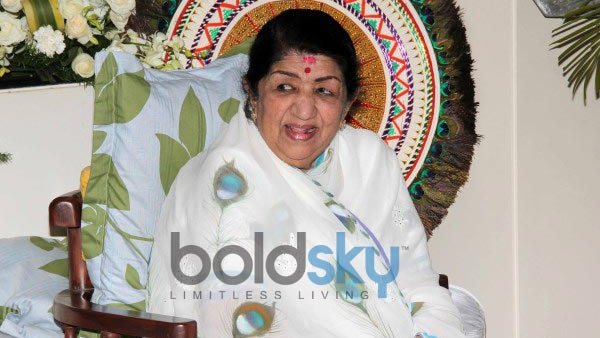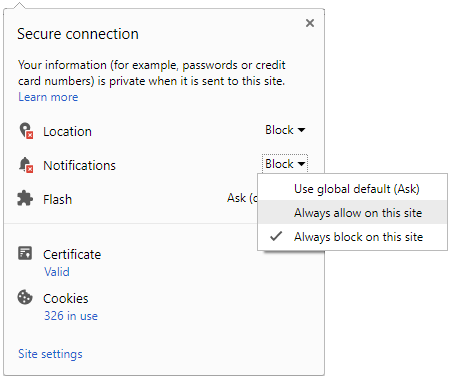Just In
- 1 hr ago

- 3 hrs ago

- 6 hrs ago

- 10 hrs ago

Don't Miss
- News
 Food Vlogger's Blue Ghee Rice Recipe Goes Viral, Will You Try It?
Food Vlogger's Blue Ghee Rice Recipe Goes Viral, Will You Try It? - Automobiles
 Ford Territory SUV Name Trademarked – Likely To Be Positioned Below The Everest SUV
Ford Territory SUV Name Trademarked – Likely To Be Positioned Below The Everest SUV - Sports
 Roman Reigns transitioning to Hollywood after WWE WrestleMania 40 loss
Roman Reigns transitioning to Hollywood after WWE WrestleMania 40 loss - Finance
 IRFC, RVNL, IRCTC, Railtel: Railway Stocks In Focus As Election Polls Begin; Mega Rs 10-12 Lakh Crore Plan
IRFC, RVNL, IRCTC, Railtel: Railway Stocks In Focus As Election Polls Begin; Mega Rs 10-12 Lakh Crore Plan - Technology
 OnePlus Ace 3 Pro Leak Hints at New Design; Expected Launch, Specifications We Know So Far
OnePlus Ace 3 Pro Leak Hints at New Design; Expected Launch, Specifications We Know So Far - Movies
 Coachella: AP Dhillon's Tribute To Sidhu Moosewala Goes Viral Amid Guitar Controversy, Fans REACT To VIDEO
Coachella: AP Dhillon's Tribute To Sidhu Moosewala Goes Viral Amid Guitar Controversy, Fans REACT To VIDEO - Travel
 Journey From Delhi To Ooty: Top Transport Options And Attractions
Journey From Delhi To Ooty: Top Transport Options And Attractions - Education
 IIIT-Bangalore Introduces PG Diploma In Digital Product Design And Management
IIIT-Bangalore Introduces PG Diploma In Digital Product Design And Management
Lata Mangeshkar Facts: Life And Times Of The Nightingale Of India

She made our hearts go up an octave or more with love and longing, moved us to tears of joy and sorrow, sometimes introspect and other times dance in abandon, her voice mirroring our every emotion, her songs covering the cadence of time and history from the gramophone to the digital age. Lata Mangeshkar is dead but the music plays on – in a seemingly endless refrain, as it has for almost eight decades and likely for many more. Lata Mangeshkar, 92, who died on Sunday, February 6 in a Mumbai hospital, sang not just in Hindi but in almost every other Indian language, that lilting voice emoting for actors down generations, from Madhubala to Preity Zinta and scores of others in between.
Here's a look at the Life and Times of Lata Mangeshkar, the Nightingale of India
Hers is the 'golden voice’ that millions of South Asians tune into when they wake up and often the last thing they hear before calling it a day, the beating heart of a shared memory passed down generations. The monikers are many - 'Melody Queen’, 'Nightingale of India’, 'Voice of the Millennium’ and simply 'Lata didi’ for many.

First Song
The Indore-born Mangeshkar’s first recorded song was in 1942 in the Marathi film “Kiti Hasaal” when she was just 13. In October last year, 79 years later, Vishal Bhardwaj released "Theek Nahi Lagta”, a song with Mangeshkar’s favourite lyricist Gulzar that was believed to have been lost.n"That long journey is with me and that little girl is still with me. She has not gone anywhere. Some people call me 'Saraswati’ or say that I have her blessings. They say I am this and that… It is their blessing that people like whatever I sing. Otherwise, who am I? I am nothing,” Mangeshkar said in her last interview to PTI days after the song was released.
Global Recognition
Her many millions of fans will disagree. For them, and even for those not familiar with her music, she is amongst the handful of Indians whose name strikes a chord in distant corners of the globe. The body of work is so overwhelming that it is impossible to take stock of at one go, with opinion divided on whether it was 10,000 songs, 15,000 or 25,000 or 30,000.
There were the gems that sparkled in the crowd - from the non-filmic tribute to the Indian soldier, “Aye Mere Watan Ke Logon", which she sang in the presence of Jawaharlal Nehru in 1963 and famously reduced him to tears and the classical “Mohe Panghat Pe” (“Mughal-e-Azam”) to the romantic “Ajeeb Dastaan Hai Ye” (“Dil Apna Aur Preet Parai”) and the seductive “Baahon me Chale Aao” (“Anamika”).

Bharat Ratna
She was awarded the Bharat Ratna, India’s highest civilian honour, the Dadasaheb Phalke award and a host of others.
Private Person
Unusually for someone so revered and so much in the public eye, Mangeshkar was always fiercely protective of her privacy. The image of the soft spoken woman dressed invariably in white and pastels with diamonds sparkling in her ears, perhaps the only concession to her wealth and fame, has withstood the years.
Relationships
She stayed single notwithstanding her much speculated relationship with cricketer Raj Singh Dungarpur, one which he spoke about and she never did.

The much discussed competition with sister Asha Bhosle was also the stuff of headlines and rumours but nothing she ever bothered clarifying. Just like both the Mangeshkar sisters kept silent about the persistent talk about how they ruled the industry and did not let others rise in the industry.
There were some other controversies, like her feud with Mohammed Rafi over royalties and her brief fallout with Raj Kapoor but those were just blips in a long career.
Humble beginnings
The beginnings were humble. Mangeshkar was born on September 28, 1929 to Pandit Deenanath Mangeshkar, a Marathi musician and Gujarati homemaker Shevanti in Indore. She was the eldest of five children – Meena, Asha, Usha and Hridaynath Mangeshkar.
Her singing talent was accidentally discovered by her father, a musician and theatre artiste, when she was only five. Her father's untimely death brought the financial burden of the family on a 13-year-old Mangeshkar's shoulders.
Family friend Master Vinayak came to the aid of the family and Mangeshkar started singing and acting in his theatre company. When she went to Mumbai, producer S Mukerji rejected her because he found her voice too thin.
Aayega Aane Wala - First Recognition And Success
But fame was waiting just around the corner. The song was “Aayega Aane Wala”, the film “Mahal” and the year 1949. Playback singers were not priority and the haunting song, one of Mangeshkar’s most loved still, was initially credited to Kamini, Madhubala’s screen name in the film. It was such a rage that people would call enquiring about the identity of the singer, forcing the radio station to contact HMV to ask who had sung the song, Mangeshkar recalls in Nasreen Munni Kabeer's documentary "Lata Mangeshkar: In Her Own Words". Lata Mangeshkar was identified on air. And the star was born.
The 1950s belonged completely to Mangeshkar who went on to work with composing greats such as Shankar Jaikishan, Naushad Ali, S D Burman, Hemant Kumar and Madan Mohan. Though the money was not great, these were the busy years for Mangeshkar and sometimes would see her record six-to-eight songs in a day, go home, sleep for a few hours and then catch the train again to a recording studio.
Her voice was such a guarantee of success that leading actors down the years would insist on Lata Mangeshkar being their voice, and put that condition down in their contracts.
The 1960s
In the 1960s, Madhubala was once again the face for Mangeshkar’s voice in the evergreen “Mughal-E-Azam” with the defiant 'Jab Pyaar Kiya to Darna Kya” becoming the byword for many a lovers rebellion. The 1960s also marked the beginning of her collaboration with Laxmikant-Pyarelal with whom Mangeshkar sang over 700 songs over a period of 35 long years, most of which became huge hits. The period saw her record duets with Mukesh, Manna Dey, Mahendra Kapoor, Mohammed Rafi, and Kishore Kumar.
The 1970s, '80s and '90s
And of course the 70s will be remembered for Meena Kumari's last film "Pakeezah" and “Abhimaan”.
The '80s saw her working on films such as "Silsila", "Chandni", "Maine Pyar Kiya", "Ek Duuje Ke Liye", "Prem Rog", "Ram Teri Ganga Maili" and "Masoom".
Her most notable songs in the 1990s and 2000s were Gulzar-directed movie "Lekin" and Yash Chopra films "Lamhe", "Darr", "Dilwale Dulhania Le Jayenge" and "Dil To Pagal Hai”.
The 2000s and Veer-Zaara
Lata Mangeshkar's last full film album was Yash Chopra's “Veer-Zaara” in 2004.
Lata Mangeshkar is gone but will never be silenced. “Whate'er the theme, the Maiden sang As if her song could have no ending”. That was William Wordsworth in another era. But Lata Mangeshkar, her songs will have no ending.
Rest in peace.
-
 insyncShreya Ghoshal 40th Birthday: Popular Songs By The Award-Winning Singer That You Will Love To Play On Loop
insyncShreya Ghoshal 40th Birthday: Popular Songs By The Award-Winning Singer That You Will Love To Play On Loop -
 menKK Dies At 53: Facts About The Renowned Playback Singer-Songwriter
menKK Dies At 53: Facts About The Renowned Playback Singer-Songwriter -
 womenLata Mangeshkar: A Look At The Legendary Singer’s Iconic Sarees
womenLata Mangeshkar: A Look At The Legendary Singer’s Iconic Sarees -
 art cultureLata Mangeshkar: The Legendary Indian Singer's Journey, As She Leaves For Her Heavenly Abode
art cultureLata Mangeshkar: The Legendary Indian Singer's Journey, As She Leaves For Her Heavenly Abode -
 art cultureLegendary Indian Singer Lata Mangeshkar Passes Away At 92
art cultureLegendary Indian Singer Lata Mangeshkar Passes Away At 92 -
 art cultureI'd Do Anything For Love Singer Meat Loaf Passes Away At 74: Tribute
art cultureI'd Do Anything For Love Singer Meat Loaf Passes Away At 74: Tribute -
 menBirthday Special: German Singer Wolf Biermann Turns 85
menBirthday Special: German Singer Wolf Biermann Turns 85 -
 fashion trendsSinger Amy Winehouse's Last Music Concert Dress Sells For €210,000
fashion trendsSinger Amy Winehouse's Last Music Concert Dress Sells For €210,000 -
 art cultureAdele's New Song 'Easy on Me' Tops 25 Million Views On YouTube; The Grammy Award Winning Singer Talks About It
art cultureAdele's New Song 'Easy on Me' Tops 25 Million Views On YouTube; The Grammy Award Winning Singer Talks About It -
 bollywood wardrobeRahul Vaidya And Disha Parmar Look Like A Couple Made In Heaven As They Twin In Wedding-Perfect Pink Outfits
bollywood wardrobeRahul Vaidya And Disha Parmar Look Like A Couple Made In Heaven As They Twin In Wedding-Perfect Pink Outfits -
 bollywood wardrobeNeha Kakkar And Rohanpreet Singh Treat Us With Their Fashionable Looks As They Give Good News!
bollywood wardrobeNeha Kakkar And Rohanpreet Singh Treat Us With Their Fashionable Looks As They Give Good News! -
 womenLata Mangeshkar Birthday: Lesser-Known Facts About 'The Nightingale Of India'
womenLata Mangeshkar Birthday: Lesser-Known Facts About 'The Nightingale Of India'


 Click it and Unblock the Notifications
Click it and Unblock the Notifications



